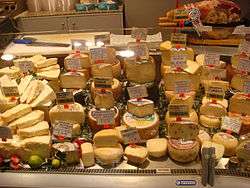Private good

A private good is defined in economics as "an item that yields positive benefits to people"[1] that is excludable, i.e. its owners can exercise private property rights, preventing those who have not paid for it from using the good or consuming its benefits;[2] and rivalrous, i.e. consumption by one necessarily prevents that of another. A private good, as an economic resource is scarce, which can cause competition for it.[3] The market demand curve for a private good is a horizontal summation of individual demand curves.[4]
Unlike public goods, private goods are less likely to have the free rider problem. Assuming a private good is valued positively by everyone, the efficiency of obtaining the good is obstructed by its rivalry, that is simultaneous consumption of a rivalrous good is theoretically impossible; the feasibility of obtaining the good is made difficult by its excludability, that is people have to pay for it to enjoy its benefits.[5]
One of the most common ways of looking at goods in the economy is by examining the level of competition in obtaining a given good, and the possibility of excluding its consumption; one cannot, for example, prevent another from enjoying a beautiful view, or clean air.[6]
Definition matrix
| Excludable | Non-excludable | |
| Rivalrous | Private goods food, clothing, cars, parking spaces |
Common-pool resources fish stocks, timber, coal |
| Non-rivalrous | Club goods cinemas, private parks, satellite television |
Public goods free-to-air television, air, national defense |
Example of a private good
An example of the private good is bread: bread eaten by a given person cannot be consumed by another (rivalry), and it is easy for a baker to refuse to trade a loaf (exclusive).
To illustrate the horizontal summation characteristic, assume there are only two people in this economy and that:
- Person A will purchase: 0 loaves of bread at $4, 1 loaf of bread at $3, 2 loaves of bread at $2, and 3 loaves of bread at $1
- Person B will purchase: 0 loaves of bread at $6, 1 loaf of bread at $5, 2 loaves of bread at $4, 3 loaves of bread at $3, 4 loaves of bread at $2, and 5 loaves of bread at $1
As a result, a new market demand curve can be derived with the following results:
| Price per loaf of bread | Loaves of bread | ||
|---|---|---|---|
| Person A | Person B | Total | |
| $6 | 0 | 0 | 0 |
| $5 | 0 | 1 | 1 |
| $4 | 0 | 2 | 2 |
| $3 | 1 | 3 | 4 |
| $2 | 2 | 4 | 6 |
| $1 | 3 | 5 | 8 |

References
- ↑ Nicholson, Walter (2004). Intermediate Microeconomics And Its Application. United States of America: South-Western, a division of Thomson Learning. p. 59. ISBN 0-324-27419-X.
- ↑ Ray Powell (June 2008). "10: Private goods, public goods and externalities". AQA AS Economics (paperback). Philip Allan. p. 352. ISBN 978-0-340-94750-0.
- ↑ Hallgren, M.M.; McAdams, A.K. (1995). "A model for efficient aggregation of resources for economic public goods on the internet". The Journal of Electronic Publishing. 1. doi:10.3998/3336451.0001.125.
- ↑ "Public Goods: Demand". AmosWEB Encyclonomic WEB*pedia. AmosWEB LLC. Retrieved 23 October 2011.
- ↑ Malkin, J.; Wildavasky, A. (1991). "Why the traditional distinction between public and private goods should be abandoned". Journal of Theoretical Politics. 3: 355–378. doi:10.1177/0951692891003004001.
- ↑ Rivalry and Excludability in Goods. (n.d.). Living Economics. Retrieved October 22, 2011 from http://livingeconomics.org/article.asp?docId=239